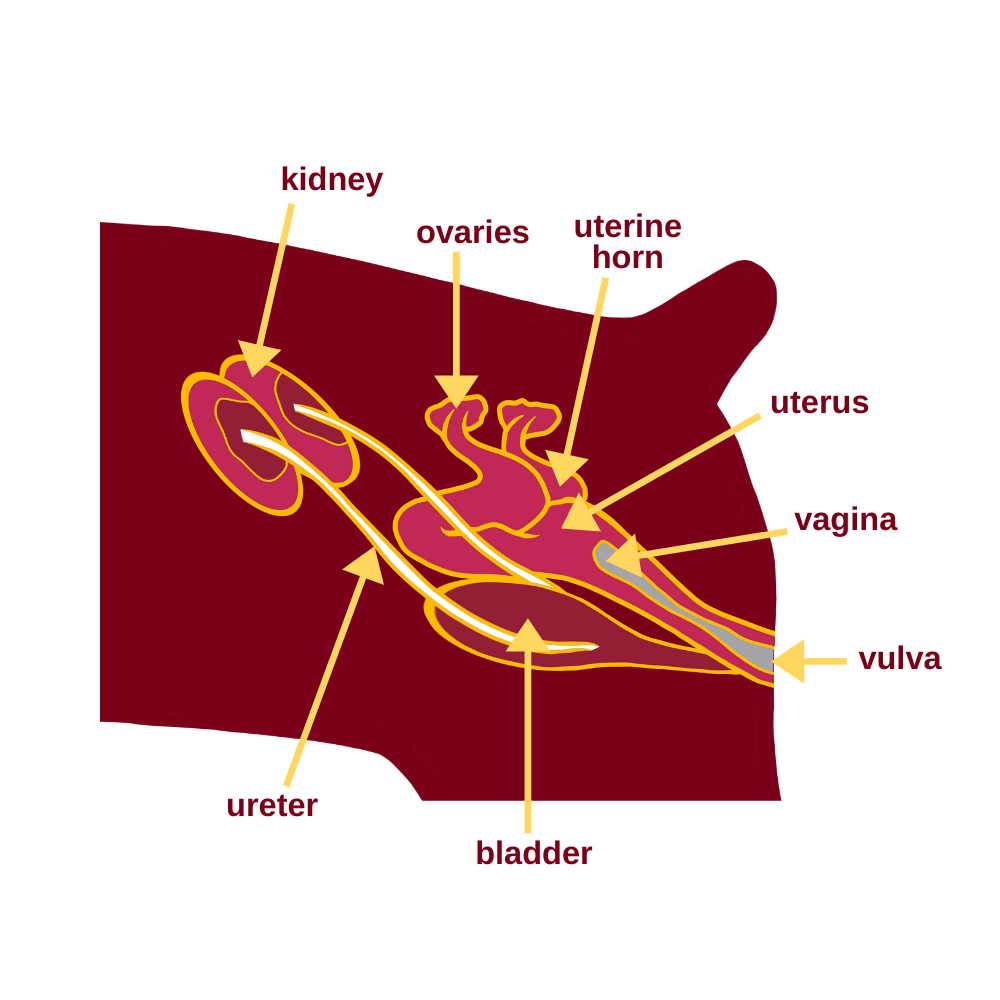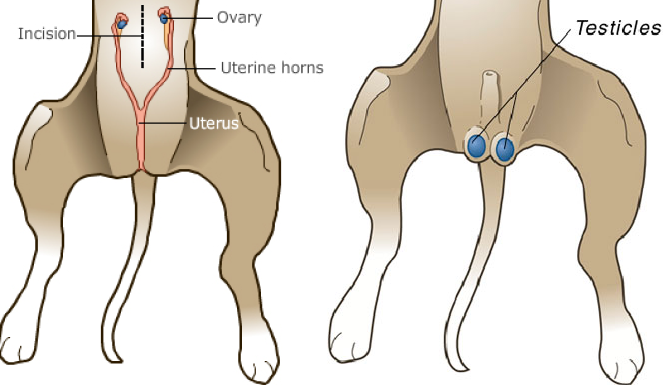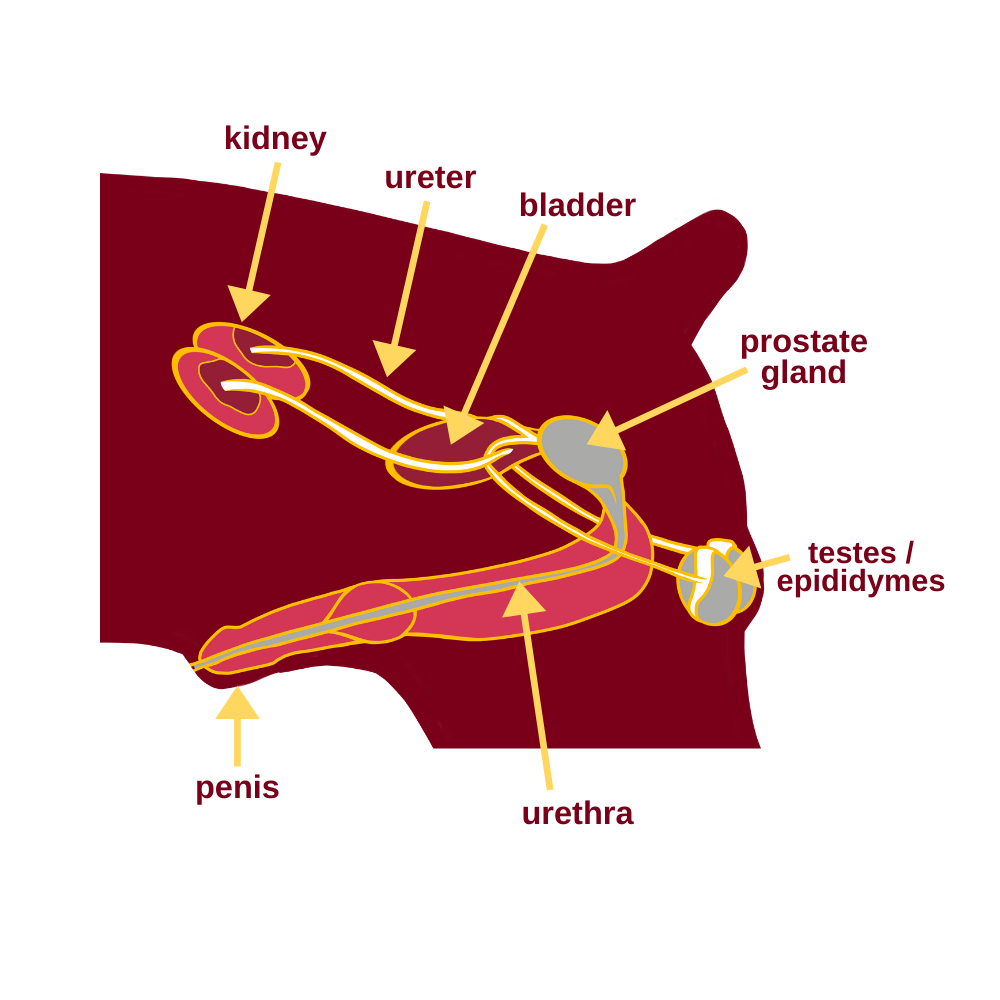


Removing or interrupting gonads

There is a common misunderstanding about castration and sterilization: castration is for males (males) and sterilization is for females (females).
What is the real story?
What happens during castration?
The definition of castration is the surgical removal of the gonads (sex glands); the testicles in male dogs or the ovaries in female dogs.
By removing the ovaries or testicles, there is less production of estrogen, progesterone and testosterone. There is always a small production by secondary tissue or other biochemical processes.
The sex hormones are important for the development of your male or female dog. It is therefore reasonable to think that castration during puberty has greater consequences for the animal than when castrated at an adult age.
Estrogen is intended to close the growth plates. This means that with early castration (<1 year) the growth plates do not close and the bones with growth plates continue to grow. This growth can lead to problems in the form of hip dysplasia (HD) and cruciate ligament lesions. In addition, there is a reduced fat and glucose metabolism, a loss of bone density and poorer blood circulation. There is also less serotonin production (serotonin is a neurotransmitter that stimulates intestinal movements and ensures that adrenaline production is reduced. It makes you happy and less stressed) and less resistance and self-healing capacity.
Progesterone is only produced in the adrenal glands, which in some situations, such as chronic stress, can lead to an even greater shortage of progesterone. This leads to a relative increase in estrogens, which in turn leads to a reduced production of thyroxine, the thyroid hormone. Furthermore, there will be shortages of magnesium, zinc and vitamin B. This in turn leads to resistance and intestinal problems.
Reduced testosterone levels as a result of castration lead to reduced bone and muscle mass, poor concentration and fatigue. With reduced testosterone levels, more fat is deposited around the abdomen and in the abdominal cavity. With reduced testosterone levels, there is poorer regulation of blood sugar levels, which can lead to insulin resistance, which can lead to diabetes.
What happens during sterilization:
During sterilization, the fallopian tubes or sperm ducts are interrupted.
The effect of sterilization is very different from castration. With sterilization, the sex hormones remain undamaged. The sex hormones continue to be produced and the effect of these hormones on the body and behavior of the animal also remains present.
That is why sterilization is actually never used in animals.
Why neutering your beloved four-legged friend
We are happy to explain what these are. But first we would like to ask you a few questions:
- Why did you choose a male or a female?
- What is the reason for neutering/castration ?
- Is the reason for neutering/castration a big problem that can't be solved in an other way?
Of course, there are many options that can be used before making the decision for neutering/castration.
It has not only affects the character of your beloved friend, but certainly also on the body.
We would like to explain to you the positive but certainly also possible long-term negative consequences depending on the age at which neutering/castration takes place.
Below we explain again the disadvantages per age category. This is a brief summary of disadvantages that have been found by research by several veterinarians at different ages
There are good reasons to have a dog castrated. There are also good reasons not to have a dog castrated
In general, more disadvantages of castration can be expected as the dog is younger at the time of the procedure.
Various “conditions” that are mentioned as a reason for castration and different conditions caused by castration can be remedied with regular therapy, homeopathy and/or behavioral therapy or normal training/upbringing.
Castration for medical reasons is probably always the best solution.
When you decide to neuter your dog you can contact your vet or one of the two organizations that neuter dogs and cats in Aruba daily.
These volunteers sacrifice their precious "free" time to help your dogs and cats. They do this, in many cases, at reduced rates.
Because a number of vets come from the USA, at their own expense, to help, they also ask for a stay to reduce the costs. This leaves more money to help the animals.
Do not abuse these rates and, if possible, donate (in money, a good bed, or help) to these organizations that do a lot of good work in Aruba.
Ask them for the rates.


